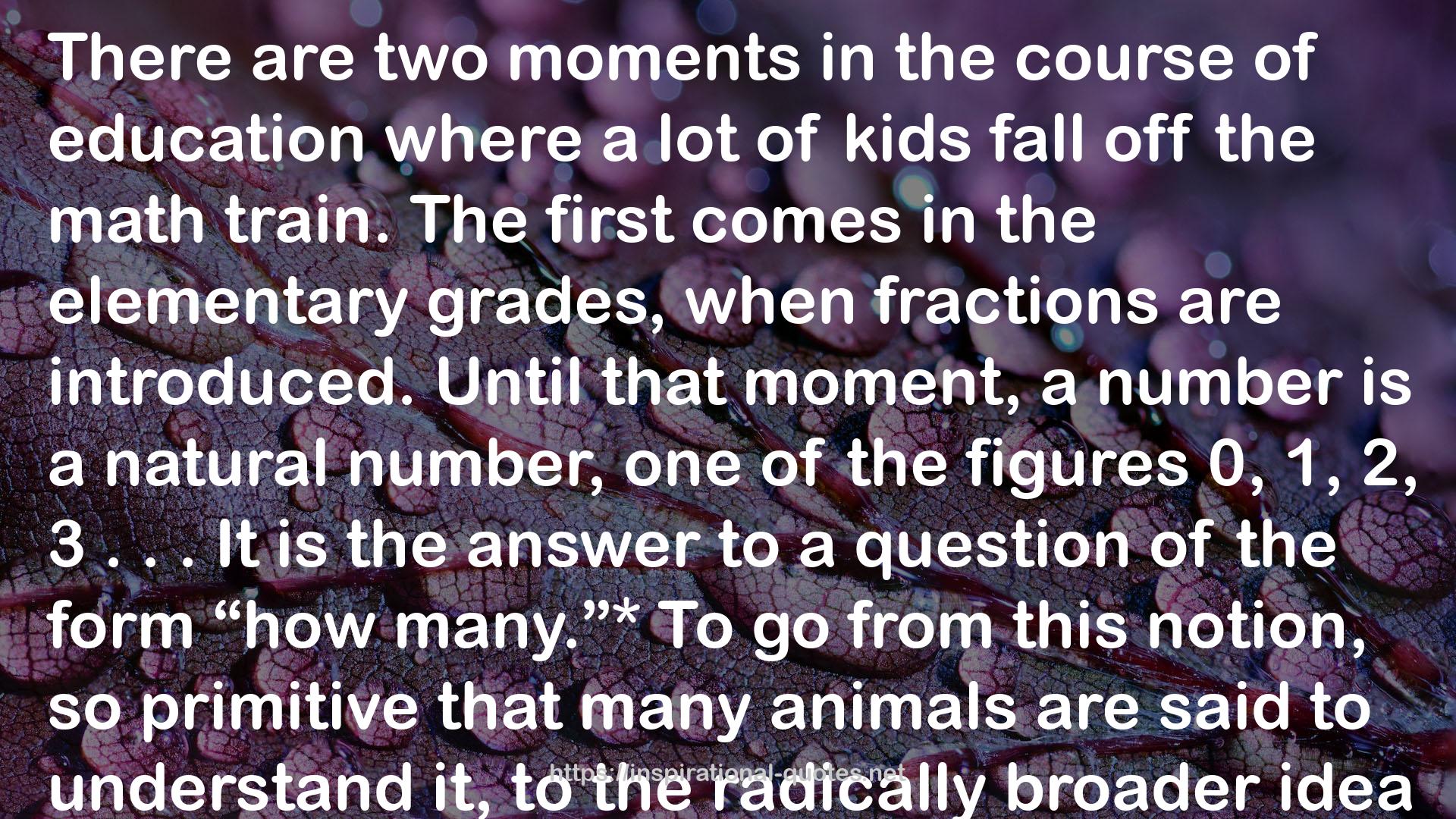" There are two moments in the course of education where a lot of kids fall off the math train. The first comes in the elementary grades, when fractions are introduced. Until that moment, a number is a natural number, one of the figures 0, 1, 2, 3 . . . It is the answer to a question of the form “how many.”* To go from this notion, so primitive that many animals are said to understand it, to the radically broader idea that a number can mean “what portion of,” is a drastic philosophical shift. (“God made the natural numbers,” the nineteenth-century algebraist Leopold Kronecker famously said, “and all the rest is the work of man.”) The second dangerous twist in the track is algebra. Why is it so hard? Because, until algebra shows up, you’re doing numerical computations in a straightforwardly algorithmic way. You dump some numbers into the addition box, or the multiplication box, or even, in traditionally minded schools, the long-division box, you turn the crank, and you report what comes out the other side. Algebra is different. It’s computation backward. When you’re asked to solve "
― Jordan Ellenberg , How Not to Be Wrong: The Power of Mathematical Thinking
